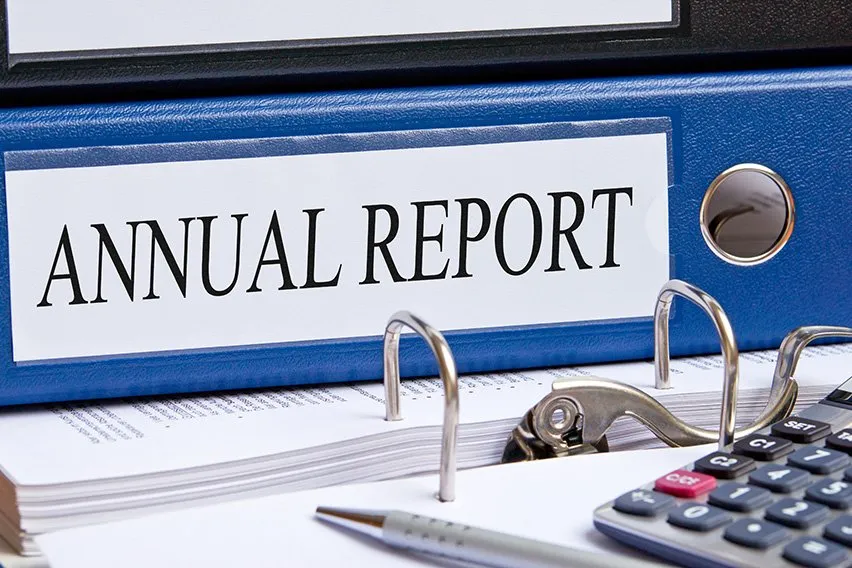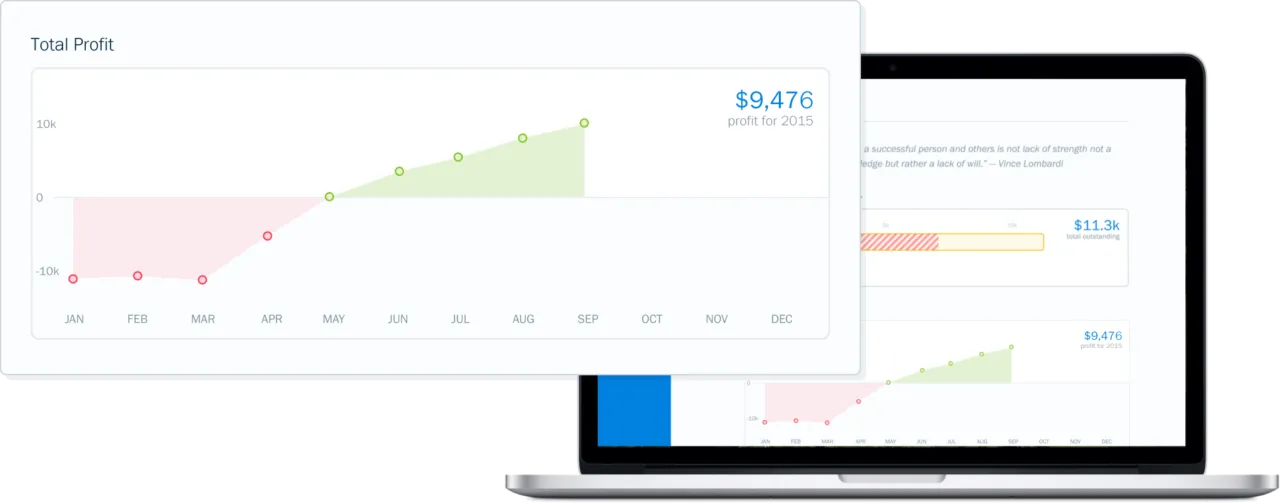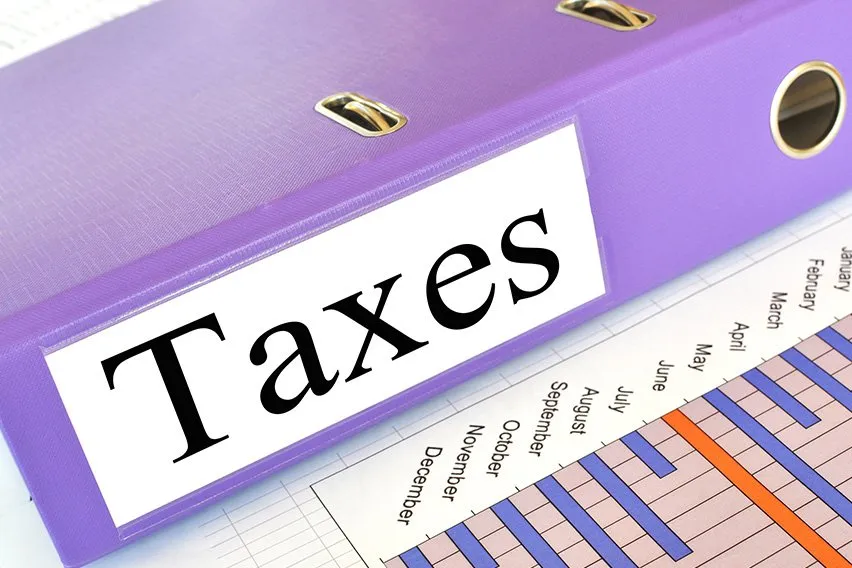How to Write an Annual Report: 4 Tips for Getting Started

Connecting with shareholders, investors, and the public is key to growing your small business. Your annual report communicates the strength of your business, so your current shareholders can feel confident knowing how your business operates. It’s also a chance to build new relationships with investors and clients by showcasing your management, financial performance, company mission, and goals.
Learning to write strong annual reports is important for delivering required year-end documents, but it can also help you forge personal connections. Explore the essential components of the annual report, as well as strategies for adding a creative touch that sets your business apart.
Key Takeaways
- An annual report communicates your business affairs to stakeholders and the public
- It typically includes mission goals, financial position, structure, and strategies
- Depending on the size of your business, you may be legally required to provide an annual report
- A good annual report can also be used as a marketing tool
- Aim to create an annual report that’s clear, honest, and engaging
What this article covers:
- What Is an Annual Report?
- What to Include In an Annual Report?
- How Do You Write a Good Annual Report?
- Why Is an Annual Report Important?
- Conclusion
- Frequently Asked Questions
What Is an Annual Report?
To write an annual report, the business operations and the financial position are listed, summarized, and recorded. The annual report is a financial document businesses provide to shareholders, potential investors, and analysts. It is the best source of information about the business performance and financial well-being of a business.
Publicly traded companies are required to file annual reports to the Securities and Exchange Commission. However, small businesses and non-profit organizations also prepare yearly reports to connect with customers and provide information about yearly operations, past performance, and future goals.

What to Include In an Annual Report?
The annual report is an integral part of corporate reporting. Since the annual reports are based on specific legal requirements, the items included in the report vary.
Most annual reports provide a fundamental overview of the business over the past year. The sections typically included in an annual report are an opening letter from the chairman, a business profile, an analysis by management, and financial data.
Chairman’s Letter
Annual reports usually start with an introduction and a letter from the company’s chairman, primary owner, or CEO to the shareholders providing a snapshot of the significant developments in the past financial year, company initiatives, and a brief summary of the financials. Key elements included in this section are the challenges that the business faced, its successes, and insight into the growth of the company.
A table of contents follows the section.
Business Profile
This section includes the vision and mission statement of the company, details of directors, officers, and registered and corporate office, investor profile, the products or services that are the main source of revenue for the business, competitor profile, and risk factors of the business.
Management Discussion and Analysis
The section provides an overview of the business performance over the past three years and discusses profit margins, sales, and income
If the business has launched a new product or service or there are drastic shifts in sales and marketing efforts, this section should include them. The other topics of discussion include new hires, business acquisitions, and other information that the management thinks would benefit the stakeholders.
Financial Statements
The financial statements are the most important part of the annual report that allows current and future investors, shareholders, employees, and other business stakeholders to determine how well the company has performed in the past, its ability to pay off its debts, its cash flow, and its plans for growth. The statements that are included are:
- Balance sheet
- Cash flow statement
- Income statement
- Statement to shareholders
These statements show whether the company has made a profit or loss in the past year, how much earnings it has retained, and the proportion of revenues to operational expenses the previous year. Apart from the financial statements, information about the market price of shares of the company and the dividends paid have to be provided.
Looking for an easier way to organize your accounts? FreshBooks’ bookkeeping software lets you manage your own bookkeeping with easy filing methods and specialist support. Click here to get started.
Other elements included in the year-end report are:
- Notes to accounts with details about the accounting policies
- Comments by auditors on the financials of the company.
- Disclaimers about forecasted income and expenses
- Stories, infographics, and photographs
How Do You Write a Good Annual Report?
Annual reports are important elements of a brand’s transparency and accountability. However, rather than writing a ponderous document that only a few can understand, businesses are creating annual reports that speak to a broad group of people.
These reports communicate the values and goals of the company’s mission and brand. Producing a highly visual and narrative-driven interactive annual report can help businesses connect with shareholders, investors, and customers. Aim to include visual elements throughout the entire report to keep the document engaging.
Determine the Key Message
Annual reports are a perfect opportunity to highlight your accomplishments and the impact of these accomplishments. The investors and employees want to know what you did and why you did it. By connecting your business activities and your accomplishments to the final goals and mission statement, businesses can build trust and foster long-lasting connections.
Finalize Structure and Content
One of the most difficult parts of writing an annual report is deciding what to include and leave out. It’s important to map out the report’s content and structure.
Apart from the basic elements such as the introduction, chairman’s letter, business profile, and financial statement, the annual report should have a storyline that defines the report’s overall structure and shapes the content around a narrative thread. This makes identifying and cutting out information that does not actively move the story forward easier.
Use clear, precise, and unambiguous writing. Maintain a professional and unbiased position throughout the document. The content of the annual report should be transparent and honest. Don’t inflate accomplishments or disguise the losses that you faced.

Make writing your annual report easier by keeping clear and detailed records as you go. FreshBooks’ accounting templates help you organize your expenses, income, and receipts so you’ve got everything ready for the end of the year. Click here to start your free trial and learn how FreshBooks can help make accounting easy.
Use Compelling Design
A well-designed, engaging, professional report can be used as a marketing tool by a business. Ideally, readers should be able to scan through the document and get the relevant information they need. Here are some pointers for a good annual report design:
- Use headings and subheadings
- Devote space to photographs, infographics, and other compelling visual elements
- Keep the text short and simple
- Use a bold and complimentary color scheme and layout techniques that are in sync with your brand
- Emphasize key areas with colored text boxes, quotes, and captions
Plan in Advance
Creating an annual report is a long-term process that requires an organized system for recording and tracking data, media clipping, photographs, and a list of business achievements. While a number of companies create the annual reports in-house, others may hire a design firm to compile, proofread and finalize the document.
Ready to create a clear and compelling digital annual report? FreshBooks’ reports feature lets you explore report templates, performance tools, and accounting details so you can write your reports in-house. Try it free to begin your annual report today.

Why Is an Annual Report Important?
Both public and private companies use annual reports to provide important business and financial information to customers, investors, employees, and the media. Here are some reasons why writing annual reports is necessary for businesses:
- Provides an opportunity to highlight a company’s key achievements, expectations for the coming year, and overall goals and objectives
- Gives information on the company’s financial position
- Introduce you’re the key members of the business to stakeholders and the general public
- Tells shareholders and employees the company’s strategy for growth in the coming year
- Useful as a decision-making tool for managers
The annual reports keep your critical business information up to date. A failure by public companies to update the investors and the state might result in late fees or even the dissolution of your company.
Conclusion
Writing an annual report is essential for communicating your business position to shareholders, investors, and the public. Depending on the size of your company, you may also be legally required to produce annual reports for the Securities and Exchange Commission.
Your annual report should include four main components: the chairman’s letter, a profile of your business, an analysis of your management strategies, and your financial statements. Adding creative elements like graphic design and a narrative can also help your annual report double as a marketing tool. Learning to create a strong annual report is essential for guiding management decisions in your company and connecting to those who support and grow your business.
FAQs on How to Write an Annual Report
How do you Write an Annual Report for a Small Business?
Writing the annual report for a small business follows a similar process as writing for a large company – you should include a chairman’s letter, business profile, management analysis, and financial statements. However, since you’re writing for a smaller business, you also have more flexibility to be creative. You can tailor your report to shareholders or make it a public-oriented document that you can use to market your small business.
Who Prepares the Annual Report?
Companies may have their own in-house writing and design team, or they may choose to hire an outside firm to prepare their report. Teams usually include accounting, writing, and graphic design professionals.
Which Things Should be Avoided while Writing a Report?
Avoid leaving your annual report to the last minute, trying to mask challenges your business has faced, or overloading the report with details and jargon. The aim is to be clear in your communication – be upfront about both your successes and losses, and write with accessible language that’s understandable to all your readers.
What are the 5 Basic Structures of a Report?
A good report can be structured in a simple 5-part setup to showcase your company’s performance. These sections are:
1. Introduction
2. Body
3. Comments and disclaimers
4. Conclusion
5. References
You’ll start with a brief overview, then provide the body of information. Comments and disclaimers should explain any claims or facts, then summarize your information in the conclusion and cite any external references.
What are the 4 components of an annual report?
There are 4 key components to include when writing an annual report:
1. Chairman’s letter
2. Business profile
3. Management analysis
4. Financial statements
You can also include creative elements like stories, infographics, and photographs to make your report more visually engaging to your target audience.
Reviewed by
Kristen Slavin is a CPA with 16 years of experience, specializing in accounting, bookkeeping, and tax services for small businesses. A member of the CPA Association of BC, she also holds a Master’s Degree in Business Administration from Simon Fraser University. In her spare time, Kristen enjoys camping, hiking, and road tripping with her husband and two children. In 2022 Kristen founded K10 Accounting. The firm offers bookkeeping and accounting services for business and personal needs, as well as ERP consulting and audit assistance.
RELATED ARTICLES


 How to Prepare Accounts Receivable Aging Reports?
How to Prepare Accounts Receivable Aging Reports? Profit and Loss Statement: Definition, Types, And Examples
Profit and Loss Statement: Definition, Types, And Examples Understanding Bank Reconciliation and How It Works
Understanding Bank Reconciliation and How It Works Sales Tax Summary Report: All You Need to Know
Sales Tax Summary Report: All You Need to Know What Is Accounts Aging and How Does It Help Your Small Business?
What Is Accounts Aging and How Does It Help Your Small Business? Balance Sheet vs Income Statement: Differences With Examples
Balance Sheet vs Income Statement: Differences With Examples